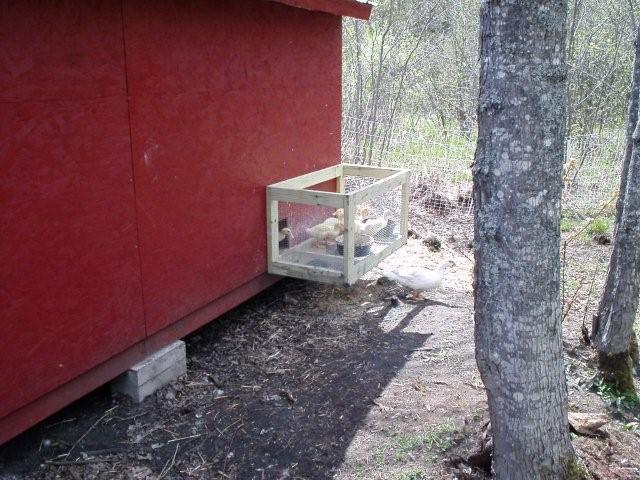I realize this is a disgusting subject, but I'm having trouble managing and I'm wondering what duck experts do.
I have 17 ducklings (2 months old) that have now moved outdoors as it is warm enough and I have them in a decent sized pen. But they poo an amazing amount! I'm having to hose off the area so frequently that the area downhill of the duck pen is a swamp! And when I hose it off, they drink the disgusting water! Is that going to hurt them? They seem to prefer the muddy poo puddles to drink from instead of the clean water I have for them.
How much bacteria do they tolerate? If I let any time go by, their pen floor becomes a solid mass of stamped down poo. And I live in a rainy climate, so it is hard to get rid of the mud puddles in their enclosure. I've tried shavings and pellets and both seem to just get saturated within an hour. So I just have them on the bare grass which is quickly turning to dirt of course.
Do they need a huge pen because of how much they poo? I'm eventually going to have seven (four cayuga and three muscovy) so how large should our pen be? We are using a moveable fencing arrangement. Do I have too much poo because the space is too small or do ducks just poop alot?
I have 17 ducklings (2 months old) that have now moved outdoors as it is warm enough and I have them in a decent sized pen. But they poo an amazing amount! I'm having to hose off the area so frequently that the area downhill of the duck pen is a swamp! And when I hose it off, they drink the disgusting water! Is that going to hurt them? They seem to prefer the muddy poo puddles to drink from instead of the clean water I have for them.
How much bacteria do they tolerate? If I let any time go by, their pen floor becomes a solid mass of stamped down poo. And I live in a rainy climate, so it is hard to get rid of the mud puddles in their enclosure. I've tried shavings and pellets and both seem to just get saturated within an hour. So I just have them on the bare grass which is quickly turning to dirt of course.
Do they need a huge pen because of how much they poo? I'm eventually going to have seven (four cayuga and three muscovy) so how large should our pen be? We are using a moveable fencing arrangement. Do I have too much poo because the space is too small or do ducks just poop alot?





